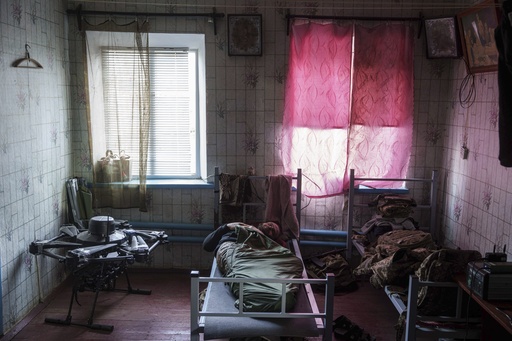POKROVSK REGION, Ukraine — Ukrainian forces are experiencing a critical shortage of infantry and are struggling with supply routes that are increasingly targeted by Russian drone strikes. This situation is putting significant pressure on Ukrainian troops in Pokrovsk, a location pivotal to the ongoing battles of the nearly three-year conflict. As the situation unfolds, time is becoming a crucial factor for the defending forces.
Ukrainian soldiers are losing their foothold near a vital supply hub situated at a key intersection of highways leading to important cities within the eastern Donetsk region, as well as an essential railway station. The pressing goal for Moscow is to capture as much territory as possible, especially as the new U.S. administration is advocating for negotiations to bring the fighting to an end and has frozen foreign aid to Ukraine—a decision that has left Ukrainian officials unsettled regarding their primary ally’s intentions. Despite these changes, Ukrainian President Volodymyr Zelenskyy has confirmed that military assistance continues.
In recent weeks, soldiers in Pokrovsk have reported a shift in Russian tactics; rather than direct assaults, Russian forces are now attacking from the sides, effectively encircling the city. With control over higher ground, the Russians have gained the ability to threaten Ukrainian supply routes. Additionally, recent heavy fog has hindered the effectiveness of Ukrainian surveillance drones, allowing Russian troops to fortify their positions and expand their territorial gains.
Ukrainian military leaders express concern over their inability to maintain sufficient reserves to defend their lines, reporting that newly formed infantry units are struggling to perform their operations effectively. Many are looking to Mykhailo Drapatyi, a newly appointed commander selected by Zelenskyy, to initiate changes and lead a counteroffensive.
“The war is won through logistics,” stated the deputy commander of the Da Vinci Wolves battalion, known as Afer. “Without logistics, infantry cannot be supplied.” He emphasized that Russian forces have adapted well to these principles.
Over the past week, a combination of adverse weather conditions and strategic errors contributed to Ukraine’s effective loss of the settlement of Velyka Novosilka. Despite some Ukrainian troops remaining in the southern sector of the village, military experts have criticized command decisions for not organizing a complete withdrawal.
Velyka Novosilka is located merely 15 kilometers (9 miles) from Dnipropetrovsk, an area where local authorities have begun constructing fortifications for the first time since Russia’s large-scale invasion began in February 2022. Russian troops have assembled significant infantry resources in the vicinity of Velyka Novosilka, creating a precarious situation for Ukrainian defenders. The onset of heavy fog has limited the operational capacity of Ukrainian drones, which are crucial for reconnaissance, significantly impacting their ability to monitor enemy movements effectively.
With this strategic advantage, Russian forces initiated a coordinated offensive involving multiple columns of armored vehicles advancing from different angles. This escalation poses a serious risk to Ukrainian logistics routes that are vital for troop supply. As Russian control expands, they threaten critical infrastructure, allowing drone operations to reach deep into Ukrainian territories—up to 30 kilometers (18 miles) inside their front lines.
The commander stationed at Pokrovsk revealed that key routes along major highways are increasingly compromised by Russian drone activity. “The Pokrovsk-Pavlohrad-Dnipro highway is already under the influence of Russian drones,” he said, noting that Russian forces are within just 4 kilometers (2 1/2 miles) of this key transport artery, drastically reducing its usability.
Meanwhile, logistical support for frontline operations has been hampered by the need for units to travel through open terrain under fire to deliver necessary supplies, including food and ammunition. A paramedic operating from a first-aid station near Pokrovsk noted that the evacuation of wounded soldiers has turned from a matter of hours into a time-consuming ordeal, with reconnaissance challenges making it dangerous to navigate.
Ukrainian forces on the ground have reported a “catastrophic” lack of available personnel, with many new infantry units lacking adequate training and experience. This has escalated the burden on seasoned soldiers who must compensate for the deficiencies of less experienced recruits. Afer expressed frustration with these new battalions, saying they are not managing their positions appropriately, which extends the front line and strains existing resources.
He explained that his battalion is significantly outnumbered, noting, “For every one of my soldiers, the Russians have 20.” This disparity highlights the dire situation faced by Ukrainian forces.
In a first-aid station, an injured soldier known as Fish was recovering from a leg injury sustained during a rescue mission in which he attempted to assist a fallen comrade. “We are fighting back as much as we can, as best as we can,” he remarked, reflecting the resilience of Ukrainian troops under challenging circumstances.




